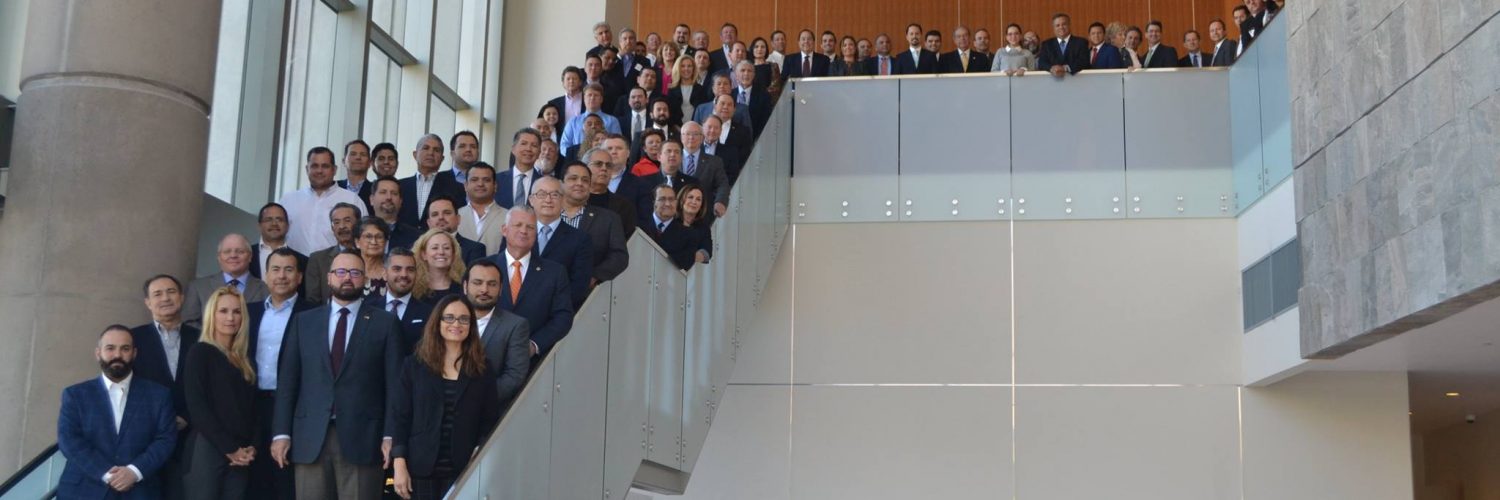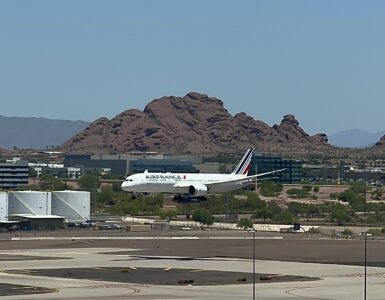The growing relationship between Arizona and Mexico has kept the Arizona-Mexico Commission busy throughout the 2010s.
Early 2010s
In 2010, the Arizona-Mexico Commission (AMC) presented the first Lifetime Achievement Award to AMC board member Harlan Capin. He served as chairman of the AMC’s Border Issues Committee for a number of years.
That year, the San Luis II Port of Entry officially opened and Arizona’s exports to Mexico reached $5 billion. By 2018, exports reached more than $7.5 billion, according to Arizona-Mexico Economic Indicators.
In 2011, Jan Brewer was inaugurated as Governor of Arizona.
That year the AMC established the Energy Committee, which promotes planning of energy management in Arizona and Sonora.
The Commission also worked with the Arizona Department of Transportation (ADOT) to prepare the Arizona-Sonora Master Plan.
The Arizona-Sonora Master Plan was designed to improve the “efficiency and effectiveness of cross-border traffic” through an integrated transportation plan, according to ADOT.
In 2012, the Transportation and Trade Corridor Alliance was established. The partners included the AMC, Arizona Commerce Authority, Arizona Office of Tourism and ADOT.
Mid 2010s
In 2013, the Raúl H. Castro Port of Entry Secure Electronic Network for Travelers Rapid Inspection (SENTRI) lane opened.
SENTRI “allows expedited clearance for pre-approved, low-risk travelers upon arrival in the United States,” according to U.S. Customs and Border Protection.
In 2014, the State of Arizona Trade Office opened in Mexico City.
The $200 million expansion of the Mariposa Port of Entry was completed. The funding for the expansion was approved in 2007.
That same year, the Transportation and Trade Corridor Alliance completed the Roadmap Action Plan to help facilitate trade.
In 2015, Doug Ducey was inaugurated at Governor of Arizona and led his first trade mission to Mexico City.
ADOT completed the $11 million modernization of downtown San Luis, AZ to help reduce port congestion.
Union Pacific Railroad also completed the $30 million rail safety and customs inspection facility in Rio Rico, AZ to process all rail traffic between Arizona and Mexico.
In 2016, Arizona and Sonora worked together to develop a binational Environmental Strategic Plan.
The plan was released the following year and focused on addressing environmental challenges and utilizing resources in the region through 2021.
At the Mariposa Port of Entry, Unified Cargo Processing was tested and ADOT completed a pedestrian underpass in 2016 to enhance safety of pedestrian crossings. Unified Cargo Processing allows custom agents of the U.S. and Mexico to jointly inspect shipments.
ADOT also signed a historic agreement that year with the Mexican Ministry of Communication and Transportation to conduct a Freight Corridor Study of the Arizona-Mexico Corridor.
The study is set to provide ADOT and other agencies with information that can help in the development of improvement strategies for the transportation system.
Late 2010s
In 2017, the State of Arizona and the State of Sonora signed a memorandum of understanding to promote the establishment of the “Home Port” project in Puerto Peñasco, Sonora.
The agreement was designed to pave the way for residents of the region to have easy access to cruises in Puerto Peñasco.
That year, Gov. Ducey hosted The Honorable Gerónimo Gutiérrez, Mexico’s Ambassador to the U.S. in Arizona, and the AMC hosted a delegation from the State of Sinaloa.
The AMC also established its Community and Social Organizations Committee, which focuses on community and civic organizations in an effort to improve the quality of life for Arizonans and Sonorans.
The Unified Cargo Processing Program, which was tested at the Mariposa Port of Entry in Nogales, expanded to Douglas and San Luis.
In 2018, Gov. Ducey announced the launch of SkyBridge Arizona at the Phoenix-Mesa Gateway Airport.
SkyBridge Arizona is a unified inspection facility that houses both Mexican and U.S. customs. It is set to speed up the process of exporting and importing goods to and from Mexico.
A joint agreement between Gov. Ducey and Sonora Governor Claudia Pavlovich launched the Lukeville-Puerto Peñasco Safety Corridor along Mexico’s Route 8.
The governors also hosted the National Governors Association North American Summit in Arizona. At the Summit, governors from the U.S., Canada and Mexico joined to share information on a variety of topics and collaborate.
State Route 189 received full funding for expansion to accommodate commercial traffic at the Mariposa Port of Entry. Also, the U.S. General Services Administration completed a $6 million-dollar Pedestrian Annex at the San Luis I Port of Entry.
In December 2018, Gov. Ducey attended the inauguration of Mexican President Andrés Manuel López Obrador in Mexico City.
Gov. Ducey, Gov. Pavlovich and former New Mexico Governor Susana Martinez signed a memorandum of understanding that same month to promote the production, transfer and international distribution of natural gas.
2019 has been an eventful year for the Arizona-Mexico relationship thus far.
In March, Gov. Ducey hosted Ambassador of Mexico to the United States Martha Bárcena.
The AMC hosted the 2019 Governor’s Luncheon where Gov. Ducey and Ambassador Bárcena expressed their support for the United States-Mexico-Canada Agreement (USMCA).
Gov. Ducey also hosted Chihuahua Governor Javier Corral for his first official visit to Arizona.
The AMC also partnered with Arizona Chamber of Commerce & Industry and the Arizona Chamber Foundation to publish The USMCA & Its Impact on Arizona. The report covers the ways in which Arizona is expected to thrive with USMCA.
The United States General Services Administration completed the Raul H. Castro Port of Entry Feasibility study and confirmed the need for a two-port solution in Douglas.
In June, the AMC held its 60th Anniversary Summit.
The Commission released Vecinos, a magazine made in partnership with Chamber Business News, at the Summit.
Leaders from Arizona and Mexico attended the Summit, including Gov. Ducey and Gov. Pavlovich, who expressed the importance of the binational relationship.















Add comment